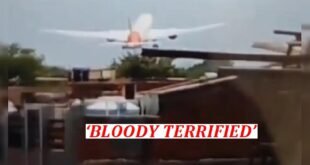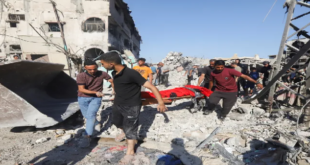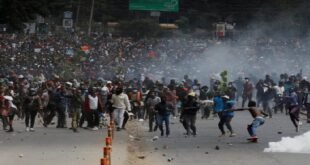12-07-2021
Bureau Report
NEW DELHI: Indians are celebrating Sirisha Bandla’s flight to the edge of space on billionaire Sir Richard Branson’s Virgin Galactic rocket plane.
Bandla is the second woman born in India to go to space after Kalpana Chawla who died when the Columbia Space Shuttle crashed at re-entry in 2003.
The rocket flew high above New Mexico in the US before returning to Earth just an hour after leaving the ground.
 Sir Richard called the trip the “experience of a lifetime”.
Sir Richard called the trip the “experience of a lifetime”.
Sunday’s trip makes the UK entrepreneur the first of the new space tourism pioneers to try out their own vehicles, beating Amazon’s Jeff Bezos and SpaceX’s Elon Musk.
Bandla, who developed an early interest in space, works as the vice president of government affairs for Virgin Galactic.
Her grandfather told media that “from the beginning, she was fascinated towards the sky, looking at the sky, space, how to enter space and what is there”.
Earlier this month, Bandla had tweeted that she would be part of the five-member crew on board the rocket:
Her presence on the historic trip has stirred a lot of excitement in India, especially in the southern state of Andhra Pradesh where she was born in Guntur district.
Soon after the rocket’s return, Indians started sending her congratulatory messages on social media.
 Vice President Venkaiah Naidu tweeted that “her achievement will motivate many more young girls in India and abroad to take up challenging careers”:
Vice President Venkaiah Naidu tweeted that “her achievement will motivate many more young girls in India and abroad to take up challenging careers”:
Industrial Anand Mahindra wrote that “Indian women are not just breaking glass ceilings they’re literally dismantling ALL ceilings on this planet and rocketing into space”.
MP Priyanka Chaturvedi congratulated Bandla saying she was “rocking it totally and in style”.
The rocket plane, known as Unity reached a height of 85km (282,000ft; 53 miles) above Earth.
Sir Richard was accompanied by pilots Dave Mackay and Michael Masucci and three Galactic employees, including Beth Moses, Colin Bennett and Bandla.
“I have dreamt of this moment since I was a kid, but honestly nothing can prepare you for the view of Earth from space,” he said in a press conference following the flight. “The whole thing was just magical.”
Sir Richard first announced his intention to make a space plane in 2004, with the belief he could start a commercial service by 2007, says Jonathan Amos but technical difficulties, including a fatal crash during a development flight in 2014, made the space project one of the most challenging ventures of his career.
 Pressmediaofindia
Pressmediaofindia




